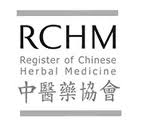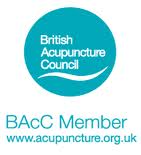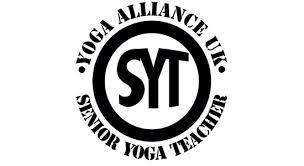Faq's
Empowering the patient with knowledge of food energetics can deeply supplement there ability to help themselves
“Let food be your medicine and medicine be your food” said Hypocrites.
In China, India and Tibet it is traditionally held that:
the most skilled doctor “should first understand the pathogenesis of the disease, and then treat it with diet, using medicines only when food fails”
Eating healthily is not just about changing to a different way of eating, but is about changing our mental attitude towards food. Many individuals habitually eat the same foods every week and so run the risk of becoming deficient in nutrients and may also develop allergies. It is thought that the foods which we eat the most often are the foods we are sensitive to. It is also common to eat in excess foods which accumulate fat toxins and fluids. These foods cause stagnation and contribute to many pathologies.
Diagnosis in TCM is made by assessing the patient's symptoms (physical and mental), medical history abdominal palpation looking at the tongue and pulse reading.
If body work is used like Shiatsu or Yoga therapy then palpation of the body, movement and mobilisation is used to asses information about meridians muscles and joints.
Chinese Medicine (TCM) views symptoms as a manifestation of an imbalance in the whole body. This interruption of health is caused by the body's two opposite principles, "Yin" and "Yang", losing balance and related to this, Qi (which means energy levels and flow), blood and body fluids become disordered leading to organ malfunctions and the resultant signs and symptoms of disease.
Treatment for chronic problems is usually once per week or fortnight, and for acute problems can be daily or a few times per week for several days. The number of treatments depends entirely on the disease, age and lifestyle.
One general guideline of treatment time is 1 year =1 month, for example a condition of 2 years duration may need 2 months treatment, a longer condition of 6 years may need 6 months, Acute conditions of a few days duration may need only 1 or 2 treatments.
Everything is relative which means if the pathology's primary cause is excessive inappropriate emotions or diet, and is not changed the treatment may be less effective.
Sometimes patients may be given a secondary formula that is occasionally used in a preventative way, or for acute stages of a new condition. E.g. frequent colds and flu.
As a member of both the British Acupuncture Council and the Register of Chinese Herbal Medicine I observe a code of practice approved by the department of health.
I use only sterile needles, single use only, I am kept up to date with any safety issues by the RCHM who monitor research and developments regarding toxicity and endangered species. I only use recommended suppliers who Follow GMP good manufacturing practice.
I am a SYT Member of Yoga Alliance SYT (Senior Yoga Teacher), the requirements are to have been teaching a minimum of 10 years and to have 6000 hours of teaching experience.
Treating the person and the disease I have over the years treated a wide variety of diseases many successfully, often they are complex and difficult conditions, that may not have responded well to conventional medicine. Every patient is unique, for example 10 people presenting with eczema or headaches, could all have a different diagnosis and treatment plam from a TCM point of view. I firmly believe every kind of condition can be helped, and many imbalances can be brought back towards balance. The treatment may also include changes in the diet, nutrition and lifestyle advice. In some difficult cases I can arrange for state of the art laboratory testing.
For most treatments including Yoga Therapy massage, it is generally not necessary to tell your doctor. It depends on what you are being treated for, if it is more serious or is a strong, acute condition and you are prescribed herbal medication, it may be sensible to tell your doctor. However, very few doctors understand herbal medicine sufficiently to a give clear and balanced view.
When we regularly practice yoga in a complete way, it helps to clear long-held blocks in your body, energy, and mind, and supports a relaxed openness and the natural arising of awareness during formal meditation and everyday life.
Using movements, asana, pranayama, and meditation all our systems and functions of body energy and mind are co-ordinated in an optimal flow of energy. Our condition can improve, everything begins to work well and we start to feel radiant, and more present. Many of our health problems can reduce, our usual aches and pains lessen or disappear, we begin to feel naturally more flexible and strong, our sleep and digestion improve and we may sense a serene calmness or peacefulness of heart and mind. The general state of our being feels more exuberant and at the same time grounded and steady.
When we work more with the mind, applying meditation and contemplation, mindfulness and awareness of our real condition can naturally develop, from this free open basis we are more connected and compassionate to others and the world.
Treatments are given according to an individual's condition to re-establish the body's natural balance. Herbal treatment acupuncture or massage can be used separately or can be combined according to the individual's condition and preference.
Herbal treatment involves taking herbs internally. There are different forms of herbs available. Concentrated powder can be dissolved in hot water , Loose or dry herbs need to be boiled for use, pills and tinctures are also available.
Acupuncture is the insertion of very fine needles into acupuncture points just beneath the body surface. These points lie on channels which connect major organs of the body. Moxibustion (which provides warmth), cupping (which involves placing a special jar on points through gentle suction) or ear acupuncture may be used if the condition requires these.
Some clients dislike needles. Also, they may have a have a condition that would benefit more from body work like massage or yoga therapy. Different techniques are therefore applied depending on the problem including deep tissue work, stretching, or applying pressure on acu-points and meridians by hand, elbows, fingers. Some conditions may require application of oils or liniments.
Firstly, it is important that the practitioner is aware of what medication you may be taking and any side affects you may experience. There are no restrictions as to who can receive treatment. TCM can be combined with many Western drug therapies, or can be used to eliminate side effects or dependence on drugs for chronic conditions. In this case many drugs could be gradually reduced as the effect of the treatment builds up, depending on your doctors approval.
Chinese Herbal Medicine and Acupuncture are two treatment methods used under the banner of Traditional Chinese Medicine (TCM). They are natural ways of healing and have existed for more than two thousand years. In the last 30 years, they have been introduced all over the world and proved effective in treating a wide range of illnesses. They are also beneficial as preventative medicine and for increasing immunity and enhancing longevity.
Traditional acupuncture is a healthcare system based on ancient principles which go back nearly two thousand years. It has a very positive model of good health and function, and looks at pain and illness as signs that the body is out of balance. The overall aim of acupuncture treatment, then, is to restore the body's equilibrium. What makes this system so uniquely suited to modern life is that physical, emotional and mental are seen as interdependent, and reflect what many people perceive as the connection between the different aspects their lives.
Based on traditional belief, acupuncturists are trained to use subtle diagnostic techniques that have been developed and refined for centuries. The focus is on the individual, not their illness, and all the symptoms are seen in relation to each other. Each patient is unique; two people with the same western diagnosis may well receive different acupuncture treatments.
Traditional acupuncturists believe that the underlying principle of treatment is that illness and pain occur when the body's qi, or vital energy, cannot flow freely. There can be many reasons for this; emotional and physical stress, poor nutrition, infection or injury are among the most common. By inserting ultra-fine sterile needles into specific acupuncture points, a traditional acupuncturist seeks to re-establish the free flow of qi to restore balance and trigger the body's natural healing response.
Until the 1940s, when the Chinese government commissioned the development of a uniform system of diagnosis and treatment, somewhat misleadingly referred to as TCM (Traditional Chinese Medicine), nearly all training had been apprentice-style with masters and within families. The same applied when acupuncture travelled overseas to Japan and South East Asia.
As a consequence of this there are many different styles of acupuncture which share a common root but are distinct and different in their emphasis. You may read of TCM, Five Elements, Stems and Branches, Japanese Meridian Therapy, and many others, all of which have their passionate devotees. The BAcC, though, has long embraced this plurality under the heading "unity in diversity" and sees the variety of approaches as the mark of a healthy profession.
Traditional acupuncture has a long history of adapting to new cultures in which it is practised. Its growing popularity and acceptance in the West may well promote yet more new and exciting variations on the ancient themes.
A growing body of evidence-based clinical research shows that traditional acupuncture safely treats a wide range of common health problems.
Source: British Acupuncture Council
Stress Relief
The practice of yoga and yoga therapy is well-demonstrated to reduce the physical effects of stress on the body. The body responds to stress through a fight-or-flight response, which is a combination of the sympathetic nervous system and hormonal pathways activating, releasing cortisol – the stress hormone – from the adrenal glands. Cortisol is often used to measure the stress response. Yoga therapy practice has been demonstrated to reduce the levels of cortisol. Most yoga therapy classes end with savasana, a relaxation pose, which further reduces the experience of stress.
Pain Relief
Yoga therapy can ease pain. Studies have shown that practicing yoga therapy asanas (postures), meditation or a combination of the two, reduced pain for people with conditions such as cancer, multiple sclerosis, auto-immune diseases and hypertension as well as arthritis, back and neck pain and other chronic conditions.
Better Breathing
Yoga therapy includes breathing practices known as pranayama, which can be effective for reducing our stress response, improving lung function and encouraging relaxation. Many pranayamas emphasize slowing down and deepening the breath, which activates the body’s parasympathetic system, or relaxation response. By changing our pattern of breathing, we can significantly affect our body’s experience of and response to stress. This may be one of the most profound lessons we can learn from our yoga practice.
Flexibility
Yoga therapy can improve flexibility and mobility and increase range of motion. Over time, the ligaments, tendons and muscles lengthen, increasing elasticity. Increased Strength: Yoga asanas use every muscle in the body, increasing strength literally from head to toe. A regular yoga practice can also relieve muscular tension throughout the whole body.
Weight Management
While most of the evidence for the effects of yoga on weight loss is anecdotal or experiential, yoga teachers, students and practitioners across the country find that yoga helps to support weight loss. Many teachers specialize in yoga programs to promote weight management and find that even gentle yoga therapy practices help support weight loss. People do not have to practice the most vigorous forms of yoga to lose weight. Yoga encourages development of a positive self-image, as more attention is paid to nutrition and the body as a whole. A study from the Journal of Alternative Therapies in Health and Medicinefound that regular yoga practice was associated with less age-related weight gain. The lifestyle study of 15,500 adults in their 50’s covered 10 years of participants’ weight history, physical activity, medical history and diet.
Improved Circulation
Yoga therapy helps to improve circulation by efficiently moving oxygenated blood to the body’s cells. Cardiovascular Conditioning: Even a gentle yoga practice can provide cardiovascular benefits by lowering resting heart rate, increasing endurance and improving oxygen uptake during exercise. Presence: Yoga connects us with the present moment. The more we practice, the more aware we become of our surroundings and the world around us. It opens the way to improved concentration, coordination, reaction time and memory. Inner peace: The meditative effects of a consistent yoga practice help many cultivate inner peace and calm.
From: http://yogaalliance.org
Free 15 Minute Consultations
If you are not sure what particular therapy is best for your condition but are curious to find out more, without committing to a full consultation, you are very welcome to drop in for a free 15 minute consultation and have your questions answered. Simply ask reception to book you in for a free 15 minute consultation. Click Here




